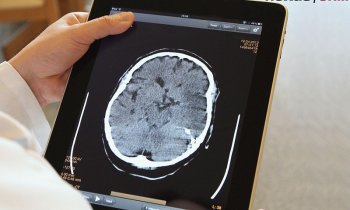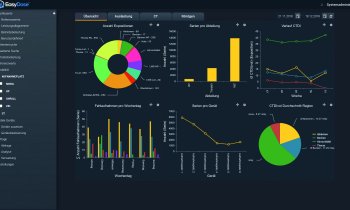PACS reloaded: Rapid Connect brings data up-to-date
The future of radiology is fast approaching -- with big steps. In some places it has already arrived, its appearance notable for the increased decentralisation of work, increase in the number of digitally generated images and a corresponding amount of digital data. Sounds straightforward? Well, it is not: the technological prerequisites to facilitate such a scenario are extensive.
The initial challenge to all these glorious advances is that of storing data volumes, soon to reach a terabyte level for single examinations. In addition, the way radiologists will view images due to the additional imaging data delivered by modern modalities will change considerably. Thus efficient solutions are needed for the viewing and evaluation so that radiologists can extract relevant information from the existing data volume. Finally, it is vital that fast and consistent data distribution between various hospital locations is ensured. Sets of data also need to be promptly available for precise and safe second diagnostic opinions from radiologists working beyond the hospital, at any time.
By extending the PACS solution with Rapid Connect Technology, Swedish firm Sectra is addressing such challenges: ‘RapidConnect is an integrated technology that delivers all the necessary prerequisites to equip surgeries, hospitals and networks for the radiological future.’
Optimised data transmission and Local Image Cache
‘Initially RapidConnect address the problem of latency, which can vary considerably in networks. The solution for this is an innovative algorithm that provides a new definition for the transmission of data for the existing network. This becomes possible through the use of streaming technology, progressive data transfer and efficient client-server protocols. The images actually required immediately become available at the connected workstation.
‘A basic prerequisite for fast data transfer, even in remote workstations, is wiring with as high a bandwidth as possible. These – purely physical – prerequisites are currently given only in rate cases. This is why the intention to install a modern PACS can fail because of structural measures that often are not calculated into the existing budget.
‘This is where this technology can also help, especially for networks with a low bandwidth a local images cache set up at the workstations facilitates the context-related, local availability of required image data. This local cache is in continuous exchange with the central database, which always guarantees that information is up-to-date.’
Slice-based streaming and prioritised data upload
‘One of the decisive components of RapidConnect is the innovate data streaming. Normally, the computer uploads all data before the image is transferred to the monitor. While this is happening, the radiologist has to wait. However, the slice-based streaming of the Sectra PACS immediately starts sending the data received to the monitor. This gives the user an entire image – initially with a lower resolution – which they can use to get a first overview and to identify the slices relevant to them. Now the prioritised data upload comes into play, which makes it possible to select just these slices for transmission and to visualise them on the screen.’
Satellite server
‘Within distributed scenarios, i.e. in networks with a PACS and several locations, the classic system of data distribution works via a central web server. In the practice this entails time-consuming, multiple data transfer: The radiologist in clinic A creates an image and sends it to the main archive situated in clinic B. Now the cardiologist in clinic A would like to evaluate just this image and asks the main archive to send these data to him.
‘To avoid these unnecessary steps, the Sectra PACS uses satellite servers for decentralised environments. These buffer the data created in one location for several months, whilst continuously aligning them with the main archive. If the images are now required in the same location the PACS accesses the locally stored data.
‘All in all, with RapidConnect Technology the Swedish company is well equipped for the future of radiology,’ Sectra concludes.
19.11.2009











